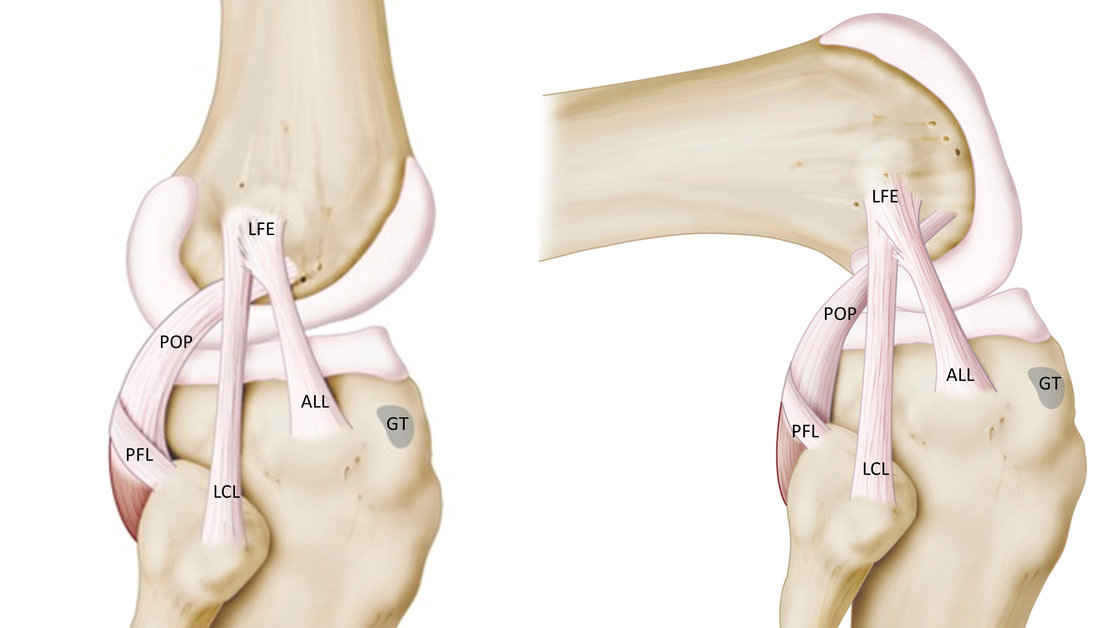7 Things You Need to Know About the “Newly Discovered” Knee Ligament

The human body still holds a few mysteries: our brains, our digestive systems, how massage and bodywork actually WORKS. That said, you might think that the anatomy of the knee would not be the field for groundbreaking discoveries, but then you would be wrong.
Orthopedic surgeons Dr. Steven Claes and Dr. Johann Bellmans from the University Hospitals Leuven in Belgium recently announced that they had discovered (or rediscovered) a new knee ligament. What do you need to know about this new ligament? There's still much research to be done on the A.L.L., but here are the basics:
1. A.L.L. stands for Anterolateral Ligament

Image: University Hospitals Leuven
2. The A.L.L. connects the thigh bone to the shinbone
Located on the outside of the knee, the A.L.L. is about the length of a small thumb.
3. The A.L.L. has been a mysterious anatomical figure for more than 150 years, but it's not a totally new discovery.
About 150 years ago, a Parisian surgeon named Paul Segond described a new body part that he had found while dissecting human cadavers. He described a "fibrous band" on the outside of the bones in the knee. Fast forward a century or so, and somehow this ligament was forgotten or ignored. Surgeons have noted that a ligament seemed to exist there, but it's never been systematically studied and documented until now.
Claes and Bellemans, had reason to begin serious focus on this area and began to search for the ligament in 41 knee joints from human cadavers. They began minutely dissecting the joints with modern techniques.
4. Study of the A.L.L. was prompted by problems with A.C.L. reconstruction surgery patients not recovering.
Even though these patients' repaired knees’ appeared to be healthy after surgery, the joint would sometimes give way as people moved.
From The New York Times: “We thought, something is still not right” in that knee, said Dr. Claes, who wondered whether additional, untended knee injuries might be to blame, and if so, whether they were occurring in uncharted knee parts.
5. How could the A.L.L. remain ignored for so long?
According to Dr. Bellmans, the simple answer is: it's really hard to see.cadaver-knee-all
"It's not so easy to find," Bellemans says. "If you ask even the most experienced surgeon to look for the A.L.L., they wouldn't find it. It's in an area that we don't usually see during surgery."
From NPR: "It's eye-opening and provocative work," says Scott Rodeo, the chief of orthopedic surgery at the Hospital For Special Surgery in New York City. He wasn't involved in the study, but he saw Bellemans' team present the work at a conference.
"We've known for years that there was a hardened, fibrous tissue in this location. And that this area of tissue plays some role. So it's not such a dramatic discovery but kind of a rediscovery — or a refocusing of attention."
Image: University Hospitals Leuven
6. Focus and research on the A.L.L. may provide some answers for patients who do not see improvements after A.C.L. surgery.
The new ligament may be the key to understanding why a small percentage of patients have persistent problems after A.C.L. reconstruction, says Rodeo.
Bellemans, the lead surgeon on the study, reports that about 80 percent of his patients with A.C.L. tears also have an injury in the A.L.L.. Clearly more research is needed to understand how this ligament works with all the other parts of the knee.
7. Surgeons are already planning and practicing surgical procedures for treating the A.L.L.
Claes and his colleagues are working on this problem now. One question is, can the ligament heal without surgery? Claes admits there's still much work to be done and will be presenting his results in the coming months, but the fact that it is named and recognized is "an important step forward."
What implications, if any, does this have for massage therapists? Share your thoughts in the comments below!
sources:
NPR's Shots Blog
NYTimes Well Blog

